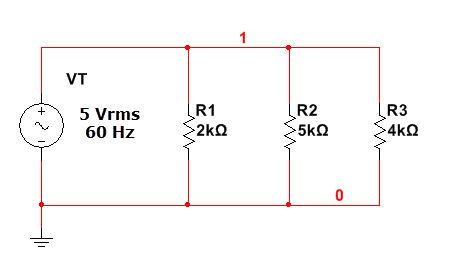Description
Fundamental Properties of AC Circuits/Lab
Alternating Voltage and Current
- For the circuit below, solve for the following:
- RT
- IT (pk), IT (p-p), IT (rms), IT (avg)
- Voltage drops across all individual resistors
- VR1 (pk), VR1 (p-p), VR1 (rms), VR1 (avg)
- VR2 (pk), VR2 (p-p), VR2 (rms), VR2 (avg)
- VR3 (pk), VR3 (p-p), VR3(rms), VR3 (avg)
- Period of the source VT

- For the parallel circuit below, solve for the following:
- RT
- IT (pk), IT (p-p), IT (rms), IT (avg)
- Current in each branch
- IR1 (pk), IR1 (p-p), IR1 (rms), IR1 (avg)
- IR2 (pk), IR2 (p-p), IR2 (rms), IR2 (avg)
- IR3 (pk), IR3 (p-p), IR3(rms), IR3 (avg)
- Period of the source VT

Submit all calculations in a document entitled EE115W1AYourGID.docx, or an equivalent word processing file extension.
Unformatted Attachment Preview
Purchase answer to see full attachment

Explanation & Answer

Attached.
Fundamental Properties of AC Circuits/Lab
Midterm
For the circuit below, solve for the following:
RT
IT (pk), IT (p-p), IT (rms), IT (avg)
Voltage drops across all individual resistors
VR1 (pk), VR1 (p-p), VR1 (rms), VR1 (avg)
VR2 (pk), VR2 (p-p), VR2 (rms), VR2 (avg)
VR3 (pk), VR3 (p-p), VR3(rms), VR3 (avg)
Period of the source VT
Given in series circuit:
R1 = 2k ohms
R2 = 1k ohms
R3 = 6k ohms
VT = 120Vrms 60Hz 0 degrees
Fo...

















